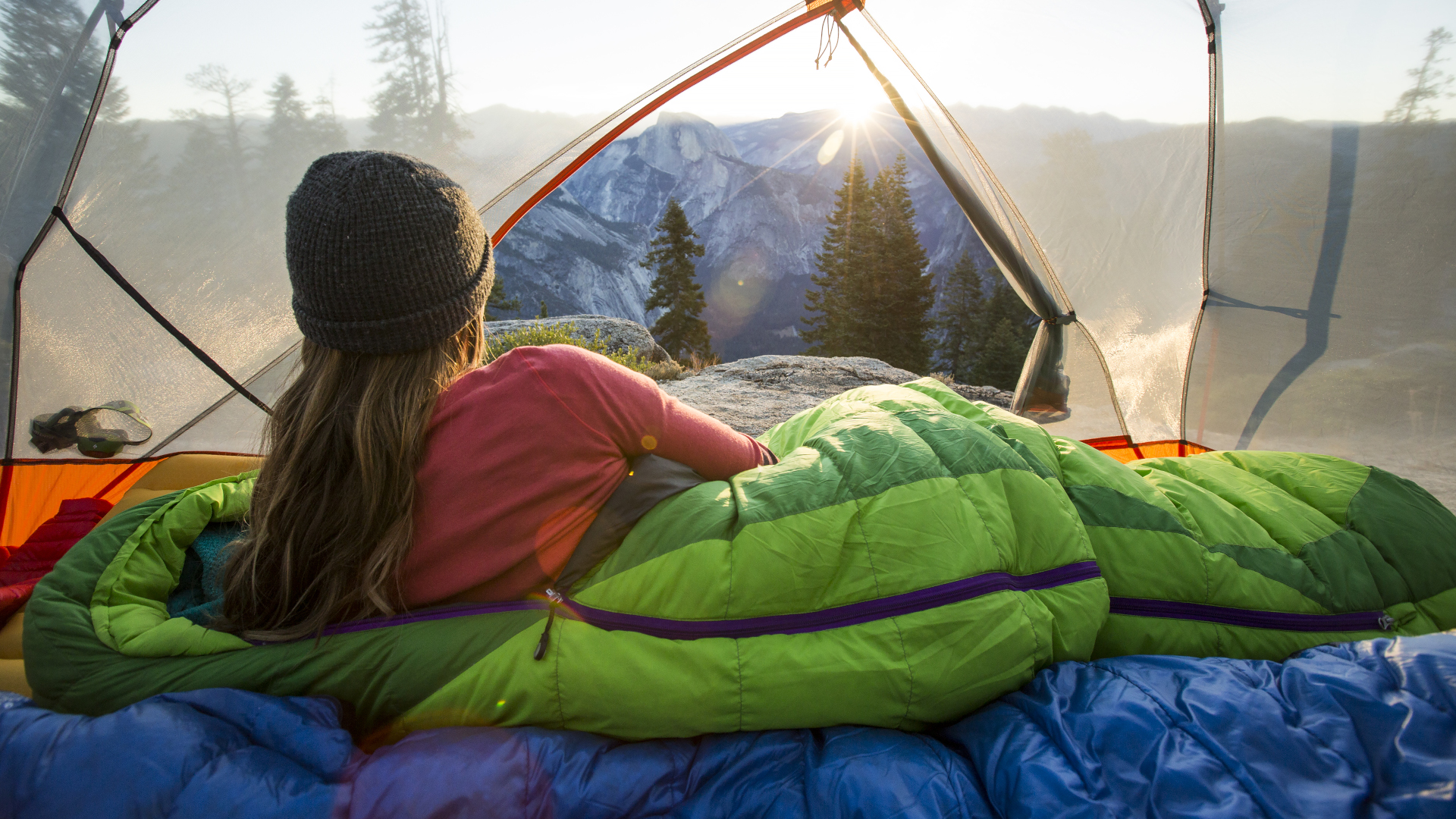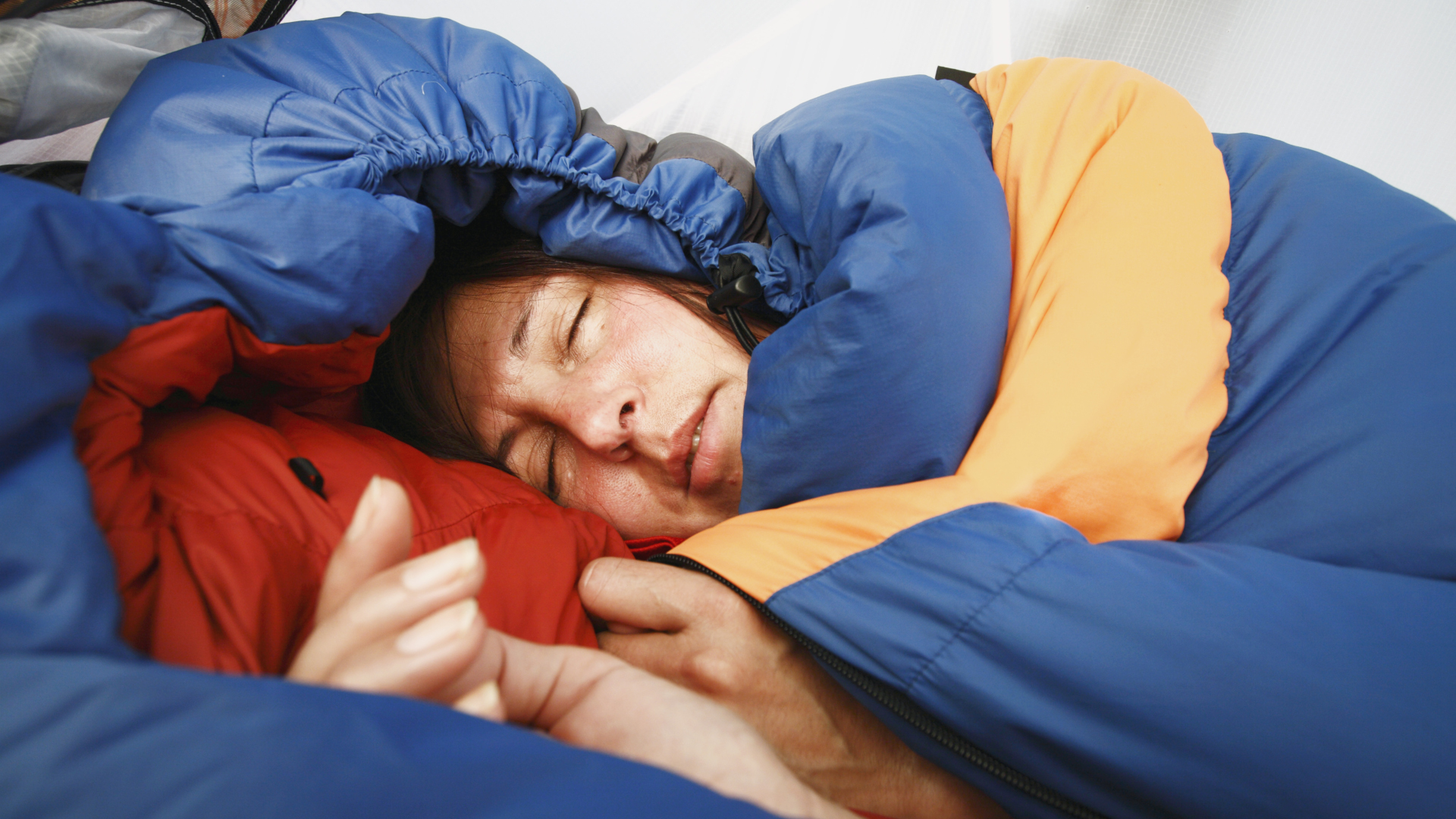Camping for side sleepers: top tips for sound sleeping
Our guide to camping for side sleepers covers the right sleeping bag, sleeping pad and camping pillows to help you catch some shuteye

There are lots of great sleeping tips for camping in comfort, like finding the right place to pitch your tent so that you’re not on an incline or being pounded by the rising sun in the morning, but they often overlook one really common factor when it comes to sleeping – what position do you sleep in? You’d think that’all that’s really needed for a good night’s sleep at camp is a nice thick sleeping pad to raise you off the ground, a mummy-shaped sleeping bag to keep you toasty and a soft camping pillow to cradle your head, and if you’re happy as a clam sleeping on your back, you’d be correct. However, if you’re a side sleeper, you may have discovered that literally none of those camping items work for you, so you’ll want to read on for our tips on camping for side sleepers to discover how to pick the best gear to get a good night’s sleep.
Sleeping bags for side sleepers

There are eight main types of sleeping bag and while mummy-style bags are by far the most popular owing to their superior warmth thanks to their tapered shape, they’re also the worst for side sleepers. Because a mummy-style bag is tighter around your hips and legs, it doesn't give you enough room to bend your knees, which you have to do to sleep on your side.
For side sleeping, you’re better off using a simple rectangular bag or you might consider a camping quilt instead of a sleeping bag, depending on the type of camping you’re doing. Rectangular bags have more fabric than a mummy-style bag, so they're generally heavier and bulkier and they don’t keep you quite as warm, but they’re a good option for car camping and camping in milder conditions.
If you’re backpacking and need to keep things light or camping in cooler temperatures, a camping quilt is a great option because it is even lighter than a sleeping bag, offers pretty good warmth when paired with your sleeping pad, and doesn’t restrict your limbs. Learn more in our article on camping quilts vs sleeping bags.
Sleeping pads for side sleepers

Sleeping pads come in a variety of shapes, styles and sizes and they’re not all ideal for side sleepers. There are two main problems with some sleeping pads for side sleepers. The first is that they don’t always provide enough padding for your hip, meaning the heaviest part of your body is pressing against cold, hard ground all night. The second problem is that some inflatable sleeping pads give you loads of padding but not enough stability and you end up rolling around all night and waking up sea sick.
There are two good options for sleeping pads for side sleepers: either a thick foam pad or an inflatable pad with smaller cells. The classic foam pad doesn’t give beneath your weight so it’s stable and gives decent padding. Though they’re lightweight, they won’t fit inside your backpack so you’ll need to be ok with strapping it onto your pack. Of course, if your car camping, a foam pad is no problem and you might even bring two for extra cushioning.
If you’d rather go with an inflatable pad that packs down smaller and weighs less, you may instinctively go for a thicker one to make sure there’s plenty of air between your hip and the earth, but you want to make sure you get one with smaller cells since these are more stable. One with bigger cells will be a bit rocky and you might end up rolling off it in the night.
All the latest inspiration, tips and guides to help you plan your next Advnture!
Camping pillows for side sleepers

As a side sleeper you definitely need some support for your neck, but a lot of camping pillows are too thin, not firm enough and don’t provide the support that your neck needs in this position. For car camping, you can obviously bring your memory foam pillow from your bed or you can find a foam camping pillow that stays with your camping gear and does the job.
For backpacking, a more packable option is definitely an inflatable pillow – some of these come with air cells not unlike a camping pad so they can be folded over to make an even bigger pillow if you have broad shoulders.
Finally, you might be a candidate for making a DIY pillow – roll up firm clothing like your fleece jacket and use the stuff sack from your sleeping bag like a pillow case. This frees up room in your backpack and gives you lots of head support.
Knee pillows for side sleepers

Finally, while you might not use a pillow between your knees from home, or perhaps you just rely on some of the excess fabric from your duvet, you may really benefit from one when sleeping on harder ground to keep your pelvis and spine in better alignment.
Carrying a second pillow just for this purpose might not be worth the added weight and bulk, but here’s another place where you can easily roll up some clothing like a fleece or down jacket and slide it between your knees before you go to sleep. If you end up making a DYI pillow for your head, you can use your camping pillow between your knees too and your hips will be happier in the morning.
This article is part of Advnture's Sleep Week 2022 (running from Monday 22 August to Sunday 28 August), our in-depth look at how to choose the best gear for sleeping outdoors and get a better night's rest in the backcountry.
Julia Clarke is a staff writer for Advnture.com and the author of the book Restorative Yoga for Beginners. She loves to explore mountains on foot, bike, skis and belay and then recover on the the yoga mat. Julia graduated with a degree in journalism in 2004 and spent eight years working as a radio presenter in Kansas City, Vermont, Boston and New York City before discovering the joys of the Rocky Mountains. She then detoured west to Colorado and enjoyed 11 years teaching yoga in Vail before returning to her hometown of Glasgow, Scotland in 2020 to focus on family and writing.

